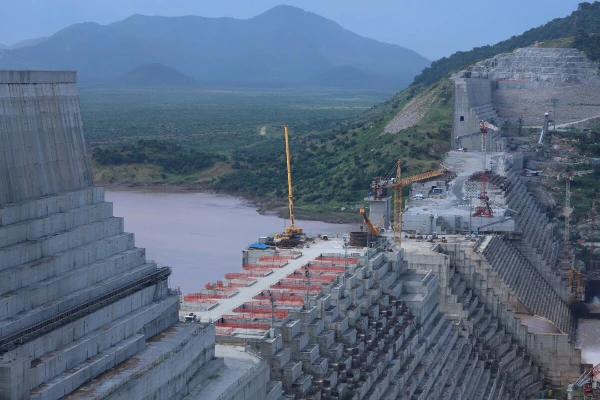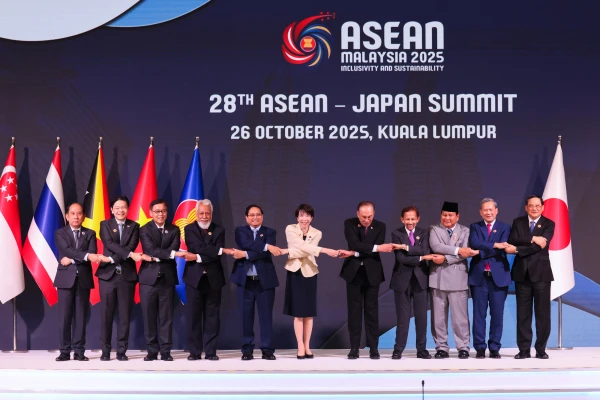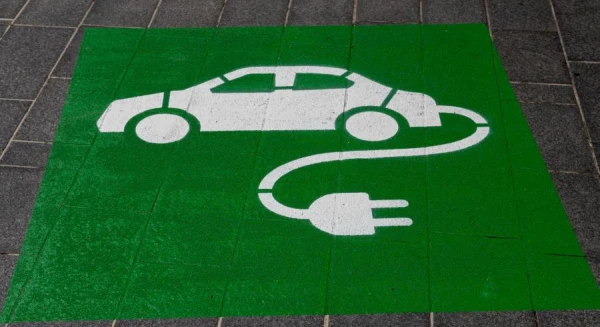
In just 10 years, China has transformed into a global leader in energy — a key sector of the global economy. The bet on renewable energy has paid off. It has not only freed China from technological and resource dependence but has also made it a superpower of 'clean' technologies of the future, as well as a leading exporter of solar panels, battery packs, and electric vehicles.
As a result, China has also seized leadership from the West in the fight against climate change and global inequality. How did the Chinese Communist Party achieve this, and what does the electrification of all of China mean for the West and oil and gas powers, primarily Russia and the USA?
"Big Surprise"
The pace of China's "green revolution" is astonishing.
China is currently installing twice as many solar panels as the rest of the world combined. China accounts for a third of all global investments in "clean" technologies — over $600 billion just in 2024.
As a result, China is not only rapidly implementing renewable energy sources and electrifying transport but has also become the world's leading supplier of "green" equipment. According to statistics for 2024, over 90% of all solar panels and over 80% of wind turbines are produced in China.
Just 10 years ago, China imported cars, and now it is the largest exporter in the world. In the last five years, it has left behind all previous leaders: Germany, South Korea, and Japan — all thanks to new technologies. Last year, Chinese BYD surpassed American Tesla to become the world's largest seller of electric vehicles.
China's economy is already one-third electrified, while the USA and the European Union are only a quarter electrified. The world as a whole will only catch up to China's level in a quarter of a century, according to recent forecasts (which will be discussed below).
The pace of transformations surprises even those who are supposed to foresee the near future.
Spencer Dale, chief economist at the British oil company BP, has overseen the benchmark annual scenario for global energy development for the past 11 years. Last week, he presented his final report before retiring. At the press conference, Dale was asked what surprised him the most during his decade as BP's chief economist.
"The biggest surprise for me is the incredible speed at which everything is changing in China," he replied.
"Currently, nearly 60% of all electric vehicles sold in the world are in China, 65% of solar panels are installed there, 65% of wind turbines, and 30% of all nuclear reactors. In the next year or two, China will begin to reduce greenhouse gas emissions. We never even dreamed of anything like this 11 years ago."
Dale admitted that he was struck by how much importance the country's authorities placed on the "green revolution" in energy during each of his trips to China.
Why did the Communist Party decide to bet on new technologies and the electrification of the entire country?
"Ecological Civilization"
"In China, there is an understanding that the old growth model based on fossil energy sources has exhausted itself. As a result, the authorities have set a course for building an 'ecological civilization' to simultaneously develop the economy, the social sphere, and ecology," experts from the Ember center concluded while preparing their first comprehensive report on China's "green revolution."
According to their estimates, China's rapid economic rise from 1978 to the early 2010s was accompanied by a sixfold increase in coal consumption and a fivefold increase in oil consumption. Maintaining such growth rates based on fossil fuels is problematic also because 70% of the oil and 40% of the gas consumed in the country are imported, including from Russia.
Energy security and ecology are not the only concerns. Clean technologies have become the driving force of the Chinese economy.
"In 2024, the production of 'clean' energy and investments in this area amounted to $1.9 trillion, which is equivalent to about 10% of China's GDP," the September report from Ember states. "And the sector is growing three times faster than the economy as a whole."
"China's achievements in clean technologies are undeniable. But it did not achieve dominance overnight," analysts at S&P Global note.
Over the past 10 years, China has invested more than $300 billion in creating capacities for producing solar panels with a total capacity of 1000 GW, wind turbines of 600 GW, and batteries of 2500 GWh, they calculated.
China has proactively addressed access to critically important materials for batteries and created conditions for competition among local manufacturers, which has spurred innovation. Currently, Chinese companies account for 75% of global patent applications in the field of "clean" energy, notes S&P Global, whereas in 2000, they accounted for only 5%.
How China Seized Leadership from the West
The "green revolution" in energy did not begin in the East but in the West, for three main reasons.
First, to stop global warming, which scientists unanimously attribute to greenhouse gas emissions into the atmosphere from burning fossil fuels — oil, gas, and coal.
Second, the West wanted to reduce its raw material dependence on countries in the Middle East, Russia, Venezuela, and other autocracies. And third, Europe and the USA were trying to maintain leadership in energy technologies.
However, the "green revolution" turned out to be costly, and there was no extra money after the financial crisis of 2008-09. Democratically elected authorities in Western countries began to gradually roll back subsidies and revise emission reduction targets.
The USA, under Donald Trump, particularly excelled in this. He canceled the "green" economic restructuring plan adopted under former President Joe Biden, and last week at the UN, he called climate change "the biggest scam in history."
The day after Trump's devastating speech, Chinese President Xi Jinping announced at the UN that for the first time in history, his country was committing to reduce emissions. Until now, China — the largest developing economy and the main source of current emissions in the atmosphere — had insisted on its right to increase them, arguing that climate change is the responsibility of developed countries that have become wealthy by burning oil and coal over the past 200 years, and that China needs to catch up.
Experts believe that the Chinese Communist Party is driven not by a love for nature but by a desire for global economic dominance.
"While European politicians are competing to praise the 'green' agenda, China consistently views climate change as an issue of industrial policy rather than ideology," notes expert Baiford Tsang, a China expert from the European Council on Foreign Relations.
Under Xi Jinping, several programs to support new industries have been adopted. The West believes that in this way, China is breaking the rules of the game, and therefore the USA and Europe have begun to protect their markets from the influx of cheap Chinese electric vehicles and solar panels.
However, Western tariffs and protectionism have only fueled the electrification of China itself, experts from the European research center Bruegel note. They cite solar panels as an example, in which China effectively has a monopoly.
Despite falling prices and protective Western tariffs, in the last two years, China has not reduced but increased the production of solar panels. Everything that could not be sold abroad was installed in China at prices below production costs and in volumes significantly exceeding the demand for solar energy and the capabilities of the power grids. With an eye on the future.
How China's Electrification Will Harm the USA and Russia
All this is bad news for the world's largest economy, the USA, as well as for Russia. Both Donald Trump and Vladimir Putin have tied the future of their countries to increasing oil and gas production and exports.
China has increased its purchases even despite the rapid growth of its own renewable energy production, as overall energy demand has still been increasing faster due to economic growth and rising incomes. Last year, "clean" energy covered 84% of new energy demand, while the rest had to be satisfied by burning additional volumes of oil, coal, and gas, Ember calculated.
But this summer, everything changed. China crossed a threshold beyond which there is a decline, not an increase in demand for traditional energy sources.
In the first half of 2025, the growth of solar and wind energy production in China exceeded the growth of electricity demand. As a result, consumption of oil, gas, and coal decreased by 2%. The electricity sector is the main consumer of fossil fuels. In three other areas — industry, transport, and building heating — China has long been replacing "dirty" energy with "clean" rather than increasing it.
Of course, the results of one half-year are not yet solid evidence of a structural shift in the Chinese economy — this has happened before. However, there have always been urgent reasons such as a sharp drop in demand due to COVID and crises or a sharp increase in supply from hydropower plants due to overflowing reservoirs.
Now, however, there is nothing like that. Industrial production grew by 6.4% over the half-year, and electricity demand grew by 3.7%. Nevertheless, fossil fuel generation decreased, which clearly confirms China's movement from the old resource model to a clean future, Ember notes.
"China is increasingly adopting renewable energy sources, building power grids and batteries, which, combined with the electrification of transport and industry, is rapidly approaching the peak demand for fossil fuels in the energy sector, as well as reducing costs and accelerating the adoption of 'clean' electric technologies in other countries," write analysts from the Ember center, whose mission is "to accelerate the transition to a clean, electrified energy future."
"These two trends create conditions for reaching a peak and reducing fossil fuel use in energy worldwide," they hope.
Not so fast, warns retiring BP economist Spencer Dale.
"Oil and gas will play a central role for at least the next 10-15 years," he said while presenting scenarios for global energy development until 2050 last week.
China Already in the Future
However, it is precisely China that will play a decisive role in how quickly global demand for oil and gas begins to decline, these scenarios state.
Over the past 25 years, China has accounted for half of the increase in global energy demand. The next 25 years will "sharply contrast" with this trend, BP economists believe.
China, along with developed countries, will reduce energy consumption due to the significantly higher efficiency of electric motors, heat pumps, and other electrical equipment compared to their fossil fuel counterparts.
If this continues, the share of electricity in final energy consumption worldwide will exceed 33% by 2050, compared to just over 20% in 2023, predicts BP.
Not everyone will make it to this future. But China is already there.
As of the year before last, the level of electrification in the Chinese economy reached 32%. Moreover, petroleum products remain the dominant source of energy only in transport, so considering the widespread transition to electric vehicles, China will soon rid itself of this dependency as well.
Europe and the USA can only dream of such a future. There, according to Ember, electrification reached 24% back in 2010 and has remained at roughly that level since then.
Can the West Catch Up with China?
The prospects for the West are bleak, warn analysts at S&P Global.
First, because it is cheaper and faster to build and produce in China than in the West, where projects take longer to approve, and labor, raw materials, and financing are more expensive. Second, because the West initially bet on more complex and expensive technologies, such as hydrogen transport and carbon capture. China, on the other hand, produces easily marketable solar panels and wind turbines on a large scale and at low cost.
And third, the West does not want to become dependent on Chinese technologies and is therefore reinventing its own electric bicycle.
The cost of achieving energy independence from China will be high, especially for Americans, as in the USA, the cost of implementing "clean" technologies per watt of capacity is twice that in China, according to S&P Global data.
And money is only half the battle. A societal consensus is needed, as electrification, like in China, requires long-term planning and government intervention. A communist planned autocracy handles this task much better than liberal market economies.
"Long timelines pose a problem. The short electoral cycles characteristic of Western democracies often become obstacles to consensus," analysts at S&P Global note.
According to their forecasts, China will remain the leader in electrification on the planet for years to come. In the next five years, 40% of all new power generation capacities in the world will be solar panels and 50% will be wind turbines.
"Nevertheless, production in China significantly outpaces local demand, and China will undoubtedly maintain its status as a key exporter of renewable energy equipment," they predict.
In a situation where the world's largest oil and gas powers, the USA and Russia, use mineral supplies as a tool of political pressure, more and more developing countries are striving to electrify according to the Chinese model.
According to Ember, one in four developing economies in the world has already surpassed the USA in electrification thanks to Chinese products. Poor countries in Africa, Asia, and Latin America are transitioning to affordable Chinese technologies, ensuring China orders for decades to come.
And along with battery packs and solar panels, China exports political influence.
Once, Brazilians and Vietnamese dreamed of a Mercedes. Now they save up for BYD.














Leave a comment